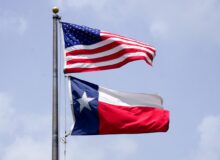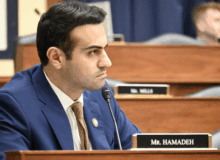“Why then sir, why do we longer delay? Why still deliberate? Let this happy day give birth to an American Republic. Let her arise not to devastate and to conquer but to reestablish the reign of peace and law.
The eyes of Europe are fixed upon us. She demands of us a living example of freedom that may exhibit a contrast in the felicity of the citizen to the ever-increasing tyranny which desolates her polluted shores. She invites us to prepare an asylum where the unhappy may find solace, and the persecuted repose. If we are not this day wanting in our duty, the names of the American legislators of 1776 will be placed by posterity at the side of all of those whose memory has been and ever will be dear to virtuous men and good citizens.” — Richard Henry Lee-July 2, 1776
Sunday, July 2, is the 247th anniversary of the Continental Congress voting to secede from the British Crown. That’s right, July 2 is America’s actual Independence Day.
The Declaration of Independence was approved/signed on July 4. But two days earlier, on July 2, the Continental Congress passed the resolution submitted by Richard Henry Lee of Virginia, declaring that we were independent of Britain. This simple resolution was a stirring call to throw off the bonds of tyranny:
Resolved, That these United Colonies are, and of right ought to be, free and independent States, that they are absolved from all allegiance to the British Crown, and that all political connection between them and the State of Great Britain is, and ought to be, totally dissolved.
That it is expedient forthwith to take the most effectual measures for forming foreign Alliances.
That a plan of confederation be prepared and transmitted to the respective Colonies for their consideration and approbation.

The resolution was initially presented to Congress on June 7, but New York, New Jersey, Pennsylvania, Delaware, Maryland, and South Carolina weren’t ready to break with England. So they tabled the action until July 1 to allow time for those states to be convinced.
And it was agreed that it would take just one no-vote to veto the resolution.
In the meantime, Congress appointed a committee to write a formal declaration of independence. Its members were John Adams of Massachusetts, Benjamin Franklin of Pennsylvania, Roger Sherman of Connecticut, Robert R. Livingston of New York, and Thomas Jefferson of Virginia. Jefferson, the best writer in the group, was the document’s primary author. Jefferson’s document read like a mission statement for the revolution and set up how this nation would be different from others—the people’s rights don’t come from the government. They come from God. The document was first presented to Congress for review on June 28, 1776.
On July 2, twelve of the thirteen colonies approved Richard Henry Lee’s resolution of independence. Delegates from New York still lacked instructions from the legislature to vote for independence, so they abstained. Even back then, the NY State legislature was a joke.
With their yes votes, the members of the Continental Congress became traitors to Great Britain and wanted criminals. That is why Ben Franklyn uttered his famous line, “We must, indeed, all hang together or, most assuredly, we shall all hang separately.”
On the evening of July 2, the Pennsylvania Evening Post wrote, “This day the Continental Congress declared the United Colonies Free and Independent States.”

After voting for independence on July 2, Congress turned its attention to finalizing the declaration. Over several days of debate, Congress made some alterations to the text, including adding the wording of Lee’s resolution of independence to the conclusion. The text of the declaration was approved by Congress on July 4 and sent off to be printed.
The day after the resolution was passed, on July 3, John Adams wrote his wife, Abigail, about the significant occurrence of the day before. He said that July 2 would be a major holiday.
The second day of July, 1776, will be the most memorable epoch in the history of America. I am apt to believe that it will be celebrated by succeeding generations as the great anniversary festival. It ought to be commemorated as the day of deliverance, by solemn acts of devotion to God Almighty. It ought to be solemnized with pomp and parade, with shows, games, sports, guns, bells, bonfires, and illuminations, from one end of this continent to the other, from this time forward forever more.
But as he was during much of his political career, John Adams was wrong. From the outset, Americans celebrated Independence Day on July 4, the date the much-publicized Declaration of Independence was approved, rather than on July 2, the day the resolution of independence was adopted in a closed session of Congress.
Four days later, on July 8, 1776, Colonel John Nixon of Philadelphia read a printed Declaration of Independence to the public for the first time on what is now called Independence Square.
Life is not a musical, so Richard Henry Lee did not go off to get his instructions singing. However, the truth is, without the approval of the largest state Virginia, we would not have been able to declare independence 247 years ago.
When telling the story of our independence, we hear about Adams, Jefferson, and Franklin, etc., but Lee went back to the Virginia legislature sold them on independence. He came back and introduced the resolution for the 13 colonies’ independence. He should be counted among the key players in our historic bid for freedom. No other colony had the influence to present such a resolution.
The video below is from the Musical 1776. Richard Henry Lee is sent off to Virginia by Adams and Franklin to get his legislature to agree to present a resolution on independence.






